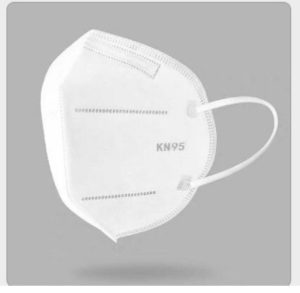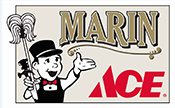N95 VS. KN95
Updated 1/8/2022. All older content is left for clarification. Updated/corrected content will appear in red.
Please note that this blog is merely for informational purposes and should not be taken as an endorsement of any specific product or in lieu of the advice of a medical professional.
FFP (Filtering Facepiece Respirators), Covid-19, and You.

-What-
KN95 are masks made in China (as are a lot of N95 masks) that have passed the stringent Chinese GB2626-2006 performance standard.
-Are They Good Masks-
The CDC2 lists KN95 masks as a “suitable alternative to provide protection during the COVID-19 response when supplies (of N95) are short”
-As of July 6, 2021, the FDA had revoked their endorsement of the masks because “Access to FDA-authorized and NIOSH-approved N95s Increases Nationwide” however this endorsement was always for healthcare situations where the standards are more stringent. It does not invalidate the KN95 masks merely makes them unusable by healthcare officials.
3M3 the manufacturer of many N95 masks has also issued a comparison between N95 and Kn95 stating that “respirators certified as meeting these standards can be expected to function very similarly”.
3M further states that “China KN95…as ‘equivalent’ to US NIOSH N95 for filtering non-oil based particles such as those resulting from…bio-aerosols (e.g. viruses)
-However-
Originally, in spite of the endorsements of 3M and the CDC the FDA refused to approve the KN95 stating: “They have not been selected by the FDA1 as an approved FFP appropriate to protect health and safety”. Their reasoning was tht they had not passed the American NIOSH 42CR84 Approval. But, many were of the opinion that the reason was more political than scientific4.
Whatever the reasons, on 4/3/2020, the FDA started giving approvals for specific manufacturers of the KN95 mask. In their press release they explained why they chose to change their minds saying: “…in response to this evolving public health emergency and continued concerns about filtering facepiece respirator availability, FDA concluded based on the totality of scientific evidence available that certain product classifications for imported disposable FFR’s that are manufactured in China and not NIOSH-approved and for which data exists that supports the respirators’ authenticity are appropriate to protect the public health or safety…”5
Regardless of the FDA’s motives what is important is that the KN95’s are available for general use and provide a level of protection for our community, meaning that the NIOSH approved N95’s are at the hospitals where they belong.
If you want to know if the manufacturer of the KN95 mask you are looking at is on the list of approvals check the Appendix listing them it was last updated 4/13/2020 as of this writing and hopefully, it will keep growing so that everyone has access to protective gear. The list can be found here: https://www.fda.gov/media/136663/download
Since the introduction of the KN95’s into the market, there have been imposters of course. The pandemic is worldwide and many people tried to counterfeit their way into a quick profit. If you have questions about the mask you are thinking of buying, the simplest answer is to buy a NIOSH-approved N95 since these are now widely available. However, if you want to see if your mask was tested by the CDC during the emergency order and how it performed the archives of those tests can be found here: https://www.cdc.gov/niosh/npptl/respirators/testing/NonNIOSHresults.html
The CDC has issued the following advisement about non-Niosh approved masks (as of 1/8/2022):
Some respirators are designed and tested to meet international standards. These respirators are labeled to tell you what standard they meet. Respirators approved by NIOSH are evaluated by NIOSH against a specific US standard that includes a quality requirement. International standards do not often have quality requirements.
The most widely available respirators that meet an international standard are KN95s.
Other examples include 1st, DL2, DL3, DS2, DS3, FFP2, FFP3, KN100, KP95, KP100, P2, P3, PFF2, PFF3, R95, and Special.
DO Not Wear
- If you have certain types of facial hair
- International respirators with exhalation valves or vents
- If hard to breathe
- If wet or dirty
- As a replacement for NIOSH-approved respiratory protection when required by your job
How to wear
Follow the manufacturer’s instructions to wear, store, and clean or dispose of the respirator properly.
-Sources-
- Imported, Non-NIOSH-Approved Disposable Filtering Facepiece Respirators EUA. Issued March 28, 2020. Accessed March 31, 2020 https://www.fda.gov/media/136403/download
- https://www.cdc.gov/coronavirus/2019-ncov/hcp/respirators-strategy/crisis-alternate-strategies.html Page last reviewed: March 17, 2020. Accessed: March 31, 2020 Content source: National Center for Immunization and Respiratory Diseases (NCIRD), Division of Viral Diseases
- Comparison of FFP2, KN95, and N95 and Other Filtering Facepiece Respirator Classes Technical Bulletin issued: January, 2020 Accessed March 31, 2020. https://multimedia.3m.com/mws/media/1791500O/comparison-ffp2-kn95-n95-filtering-facepiece-respirator-classes-tb.pdf
4. Coronavirus Cases Have Surged, But The US Is Refusing To Take The World’s Most Available Masks (Bensinger, Ken) Buzzfeed.News March 29,2020. Accessed March 31, 2020 https://www.buzzfeednews.com/article/kenbensinger/coronavirus-kn95-masks-us-wont-import-china
5.Non-NIOSH-Approved Disposable Filtering Facepiece Respirators Manufactured in China Issued April 3, 2020. Accessed April 14, 2020. https://www.fda.gov/media/136664/download
6. Accessed 1/8/2022 https://www.fda.gov/medical-devices/emergency-use-authorizations-medical-devices/revoked-euas-non-niosh-approved-disposable-filtering-facepiece-respirators#imported
7. Accessed 1/8/2022 https://www.cdc.gov/coronavirus/2019-ncov/prevent-getting-sick/types-of-masks.html

